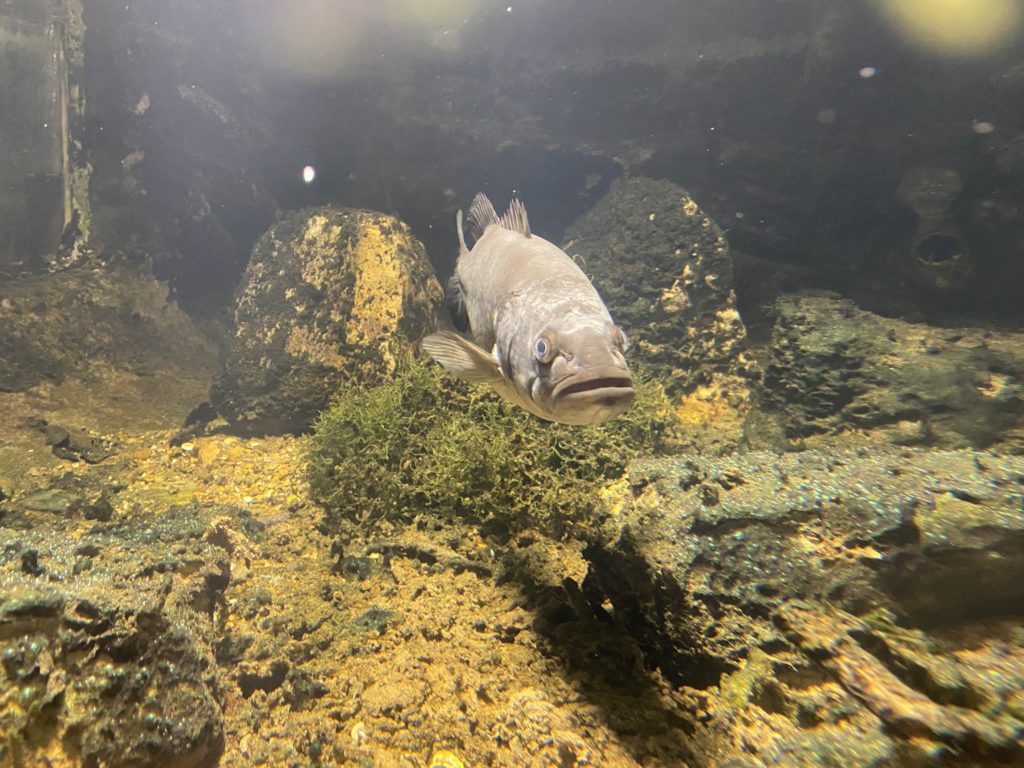In case you’ve been living under a rock, Bays Mountain Park recently secured two new bobcat kittens for its animal habitats. The brothers – named Carter and Cash – were born back in May and are two of a litter of four.
The bobcats are gorgeous and of course playful, like most kittens are. And to say folks in our area are excited about their arrival would be an understatement.
Pictures of Carter and Cash garner gobs of likes and shares on social media and people reach out to us on a regular basis asking when the bobcats will be in their habitat. FYI, the brothers are currently in quarantine to get them accustomed to humans.
These feline celebrities are clearly some of the most popular animals at Bays Mountain Park – and hardly anyone has seen them yet.
However, I would like to remind folks that there are other animals at the park and with the weather getting colder, now may be the perfect time to visit some of the critters that may not get as much love as their warm-blooded brethren.
Heroes in a Half-Shell
Even though I’ve been to Bays Mountain Park hundreds of times and visited the watershed and herpetarium before, I still wanted to know – officially – what “other” types of animals could be found at the park.
Park Naturalist Tyler Wicks graciously obliged and recently gave me a tour of the park’s indoor animal habitats.
First stop on the tour was the watershed – the first-floor room with the giant fish tank for lack of a better description.
“This exhibit was previously an ocean exhibit but was converted to a fresh-water native exhibit a few years ago,” Wicks explained. “It used to showcase wildlife from other parts of the country. We thought it would be a better fit with a focus on animals from our region.”
The watershed is home to a variety of native turtles (snapping, soft-shelled, box and musk) and fish, including large and small mouth bass, blue gill and black gar. The room also includes two exhibits of what a pond might look like and a small beaver lodge and dam.
“A lot of our turtles are rescues, that have either been injured out in the wild or sold as pets and people can’t take care of them,” Wicks said. “We take in a lot of turtles that otherwise wouldn’t have a home in the wild.”



Ten points to House Slytherin
My next stop was the Herpetarium, located on the east side of the nature center, just down the path between the habitats for the bobcats and the fox. Built in 1998, the Herpetarium is home to the park’s snakes, frogs and salamanders…and a few tiny turtles.
The focal point of this facility is the “snake wall” – a literal wall of snake habitats built to resemble a giant rock formation with a centralized tree. Chairs fill the floor of this spacious classroom and naturally, the exhibit is a big hit, at least with school-aged children, Wicks said.
It was a big hit for me as well. Personally, I believe snakes get a bad rap in the media and are often maligned unfairly. Contrary to popular belief, snakes aren’t aggressive, they won’t chase you down and will likely only bite you if you step on them.
Among the 16 snakes found in the park’s Herpetarium are the Striped California King snake, the Timber Rattlesnake, the Copperhead, a Black King snake and a Corn snake. Two hand-fed Garter snakes will eventually move into the habitat and park officials hope to add a Pine snake in the future.
Once they do, I’ll be sure to pay it a visit. Pine snakes are rather elusive, and most people have never seen one.

Cold Water Critters at Bays Mountain Park
Heroes In A Half Shell
On Turtle Pond
Literally a stone’s throw from the Herpetarium is a small, fenced-in pond full of box, snapping and pond slider turtles. However, if you go by to see them this time of year, I’m afraid you’re going to be sorely disappointed.
“The turtles are here, but not where you can see them,” Wicks said. “They’re cold-blooded and when the weather gets cold, they have to burrow down in the bottom of the pond to keep from freezing to death.”
The act is called brumation and it’s essentially hibernation for reptiles. Turtles can’t function at colder temperatures, so they burrow themselves in layers of leaves and mulch at the bottom of ponds and you won’t see them until springtime.
Ah, but how do turtles breathe at the bottom of a pond you wonder? I’ll let Wicks explain that himself.
“Turtles absorb oxygen out of the water through the thin skin around their butts. Yes, they breathe through their butts in the wintertime,” he said.
I bet you didn’t know that.
If you’re interested in knowing more about the animal exhibits and other features at Bays Mountain Park, be sure to visit its website www.baysmountain.com or go talk with one of the naturalists on staff. There’s no telling what you might learn.



